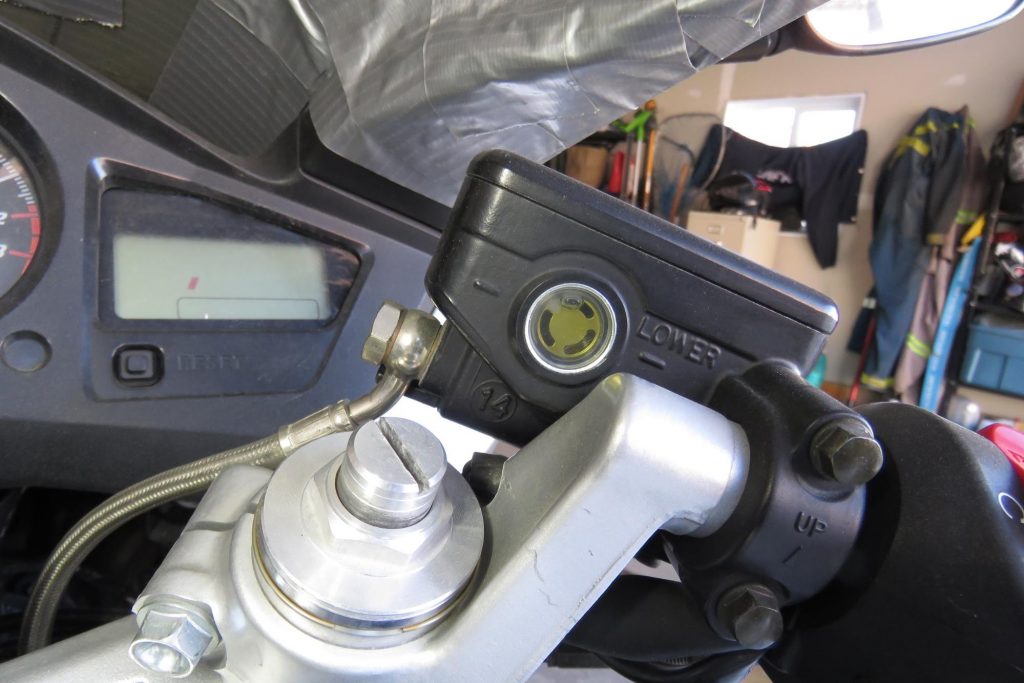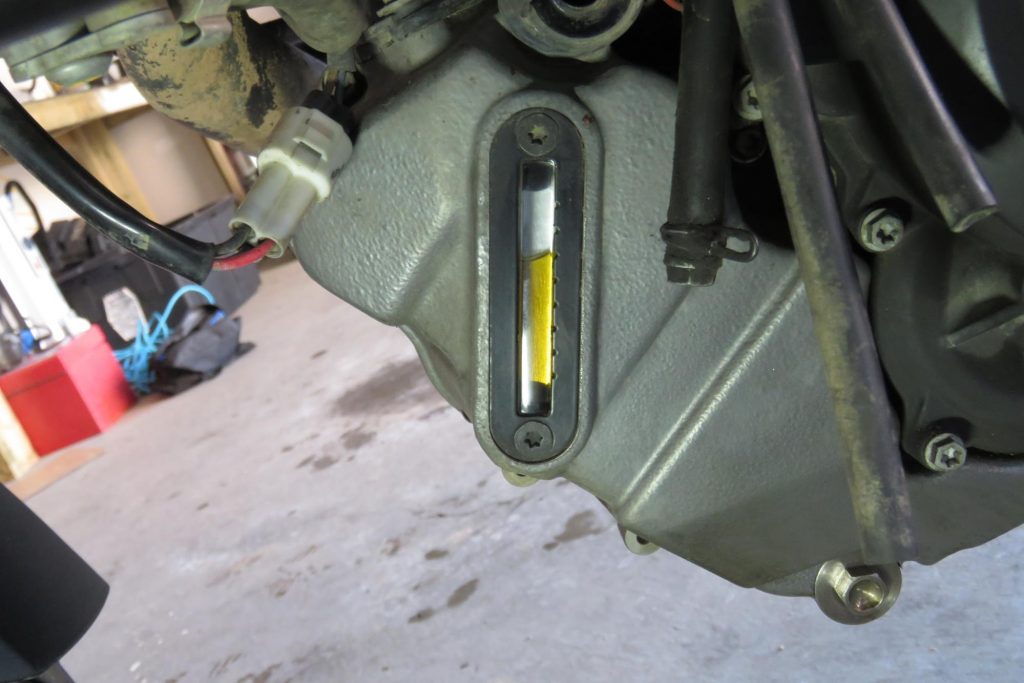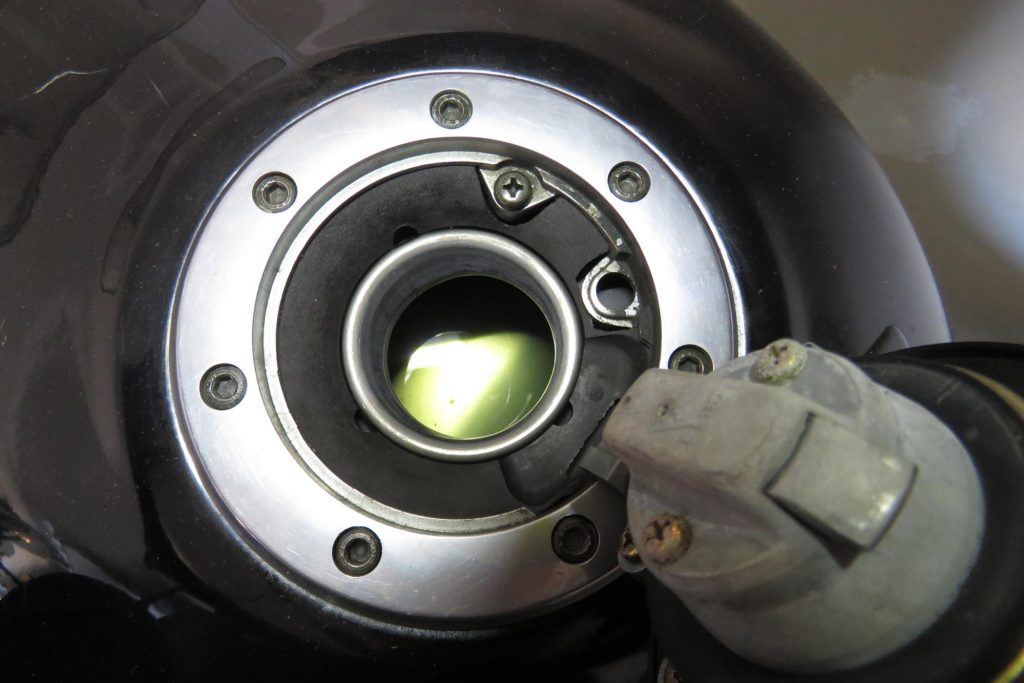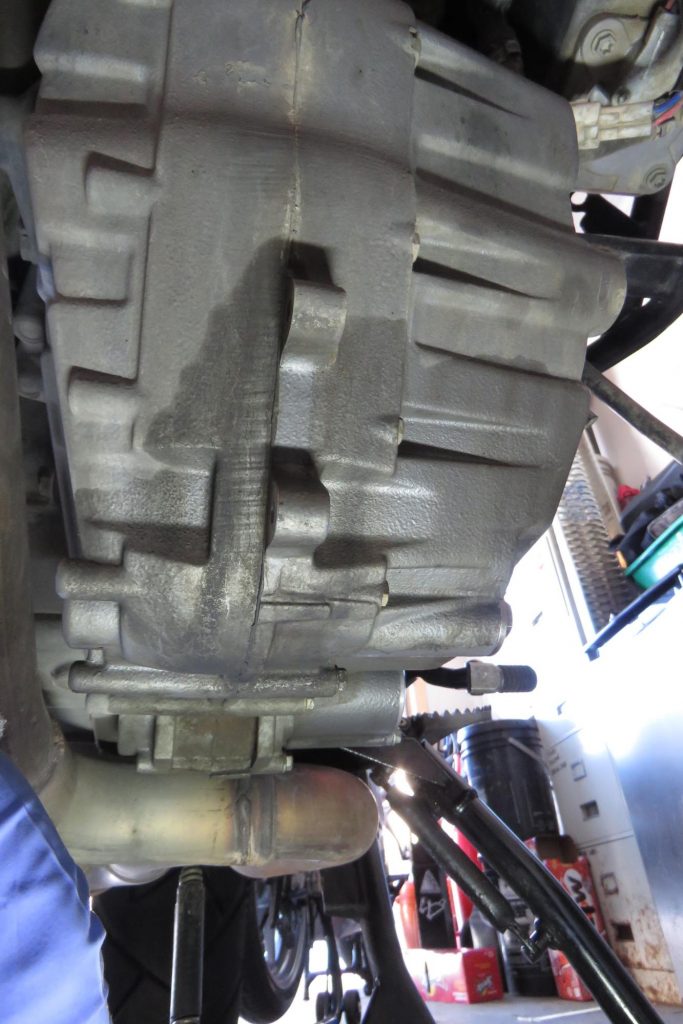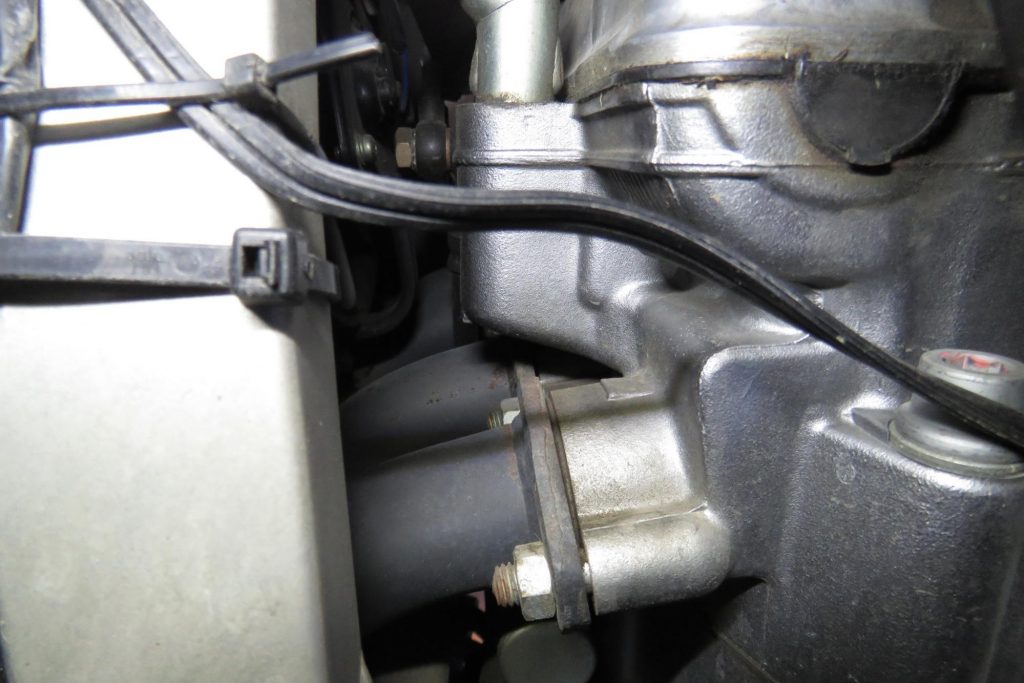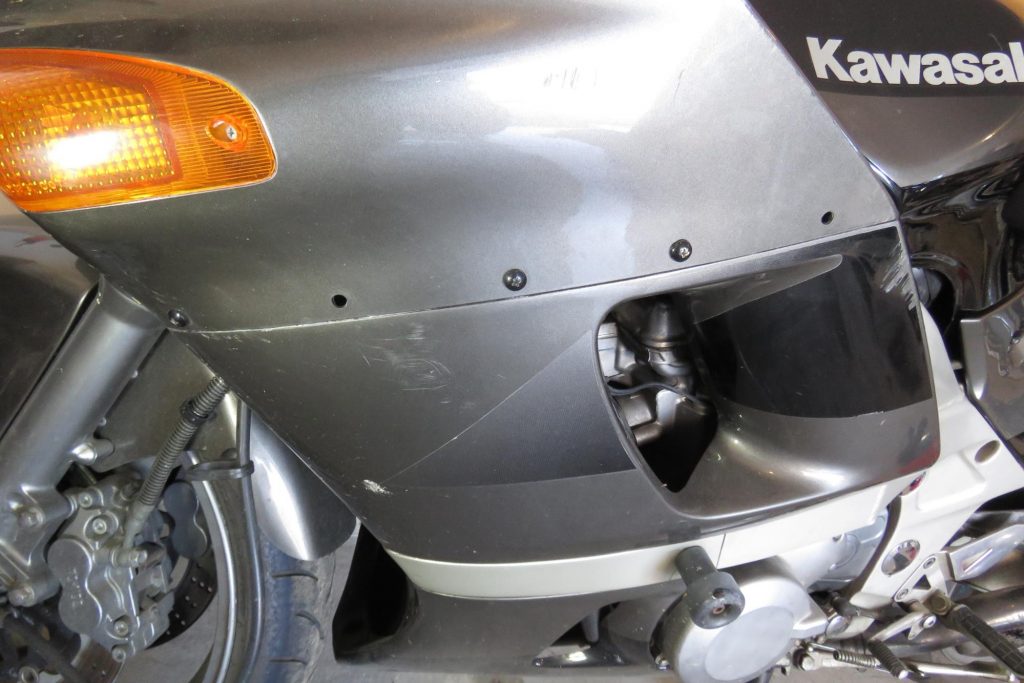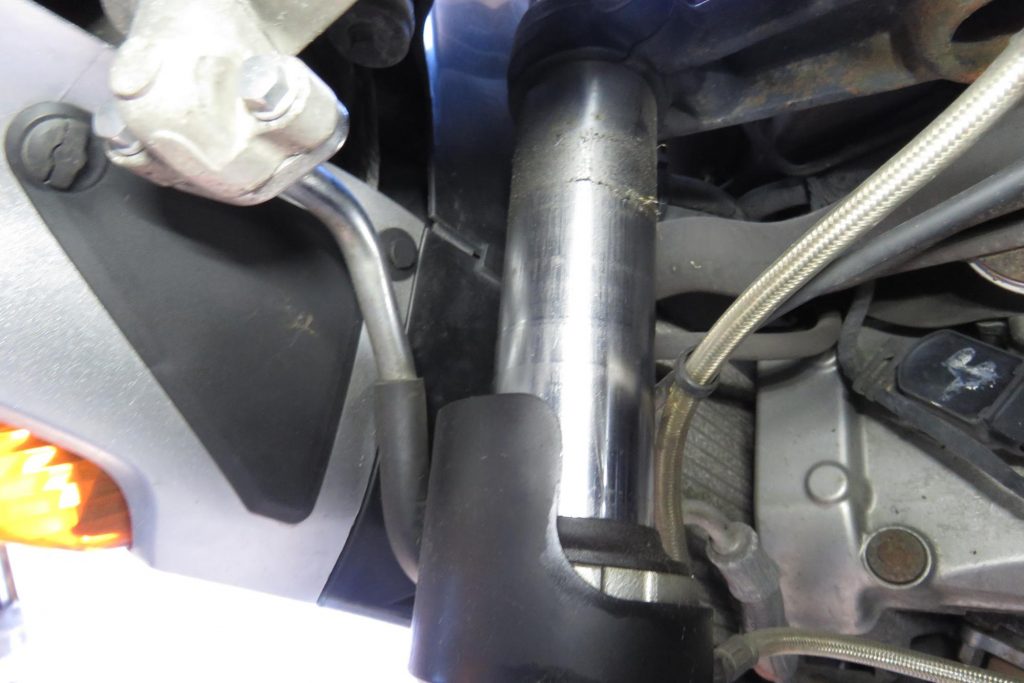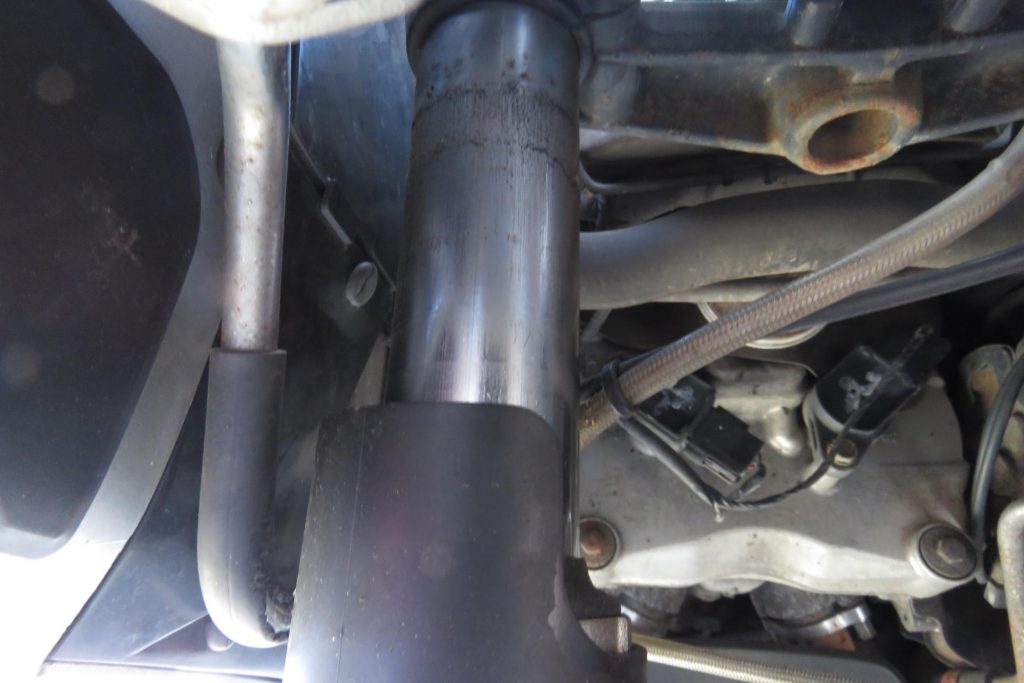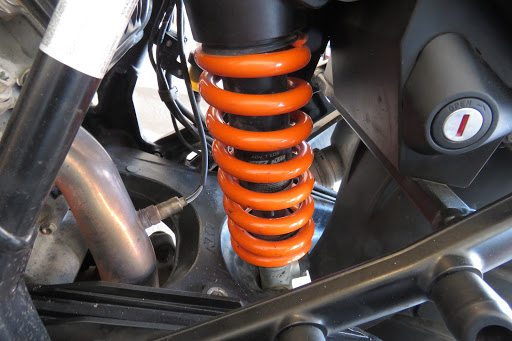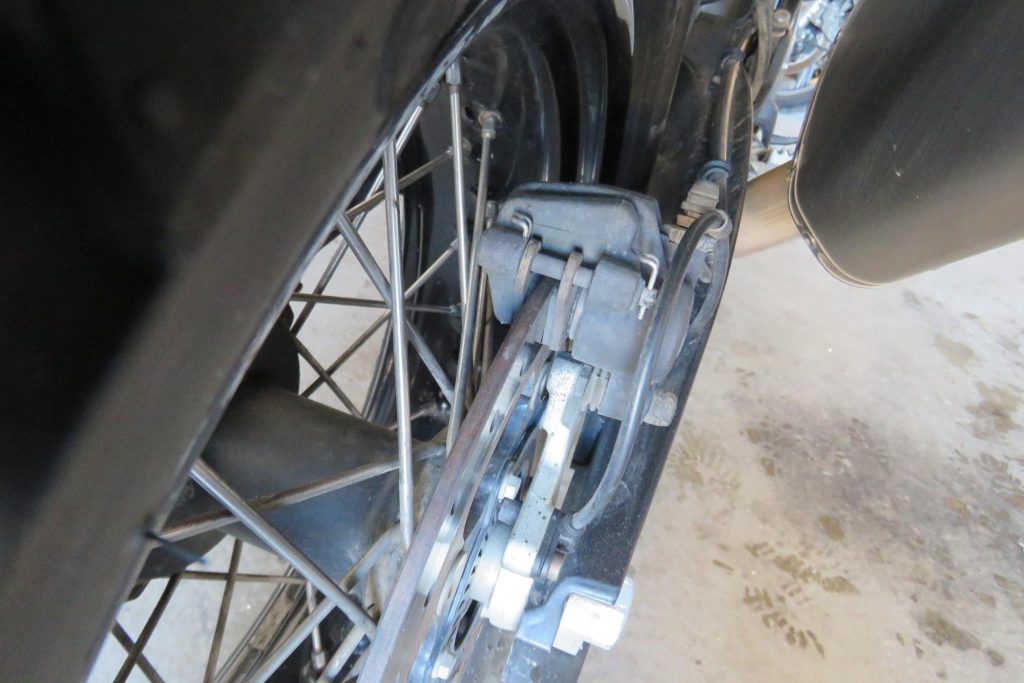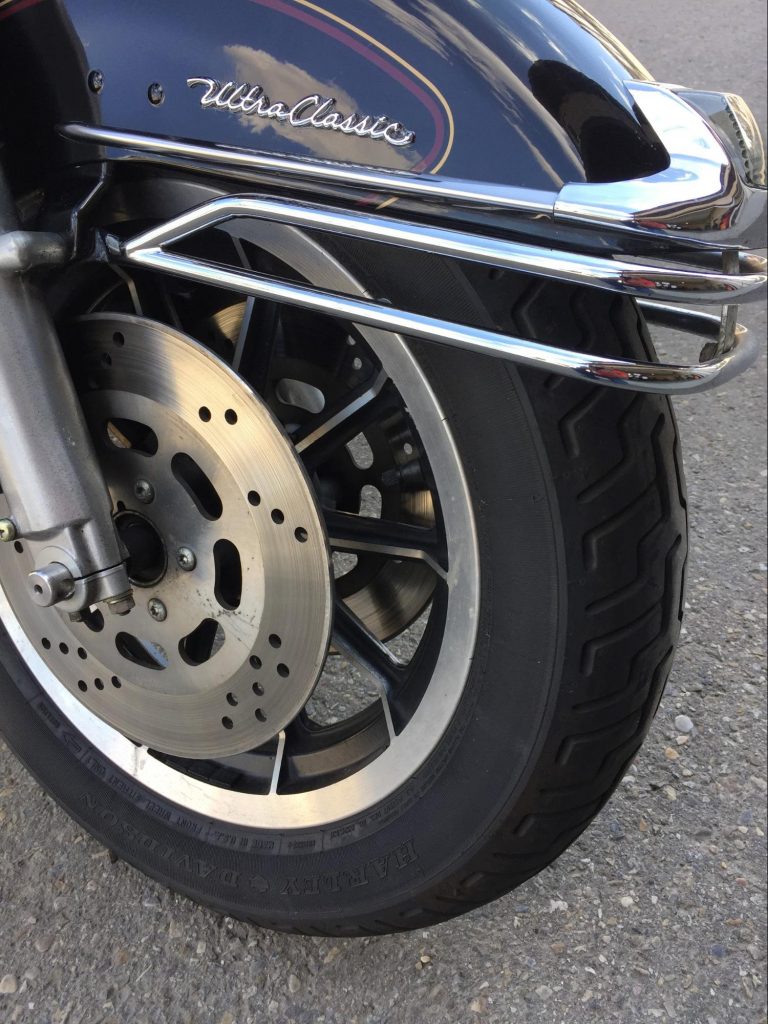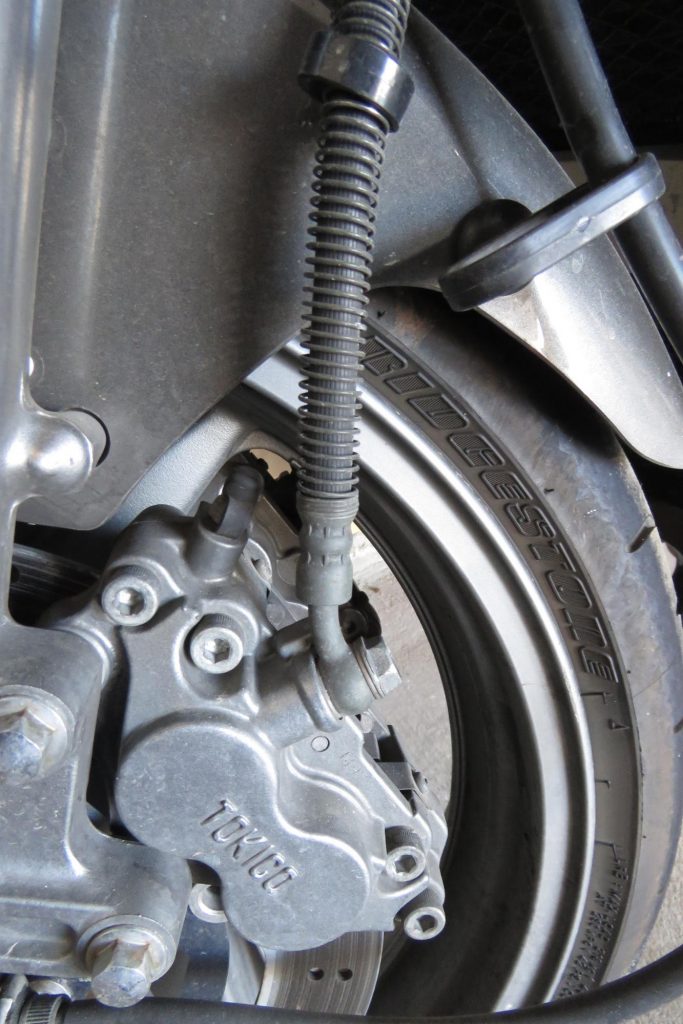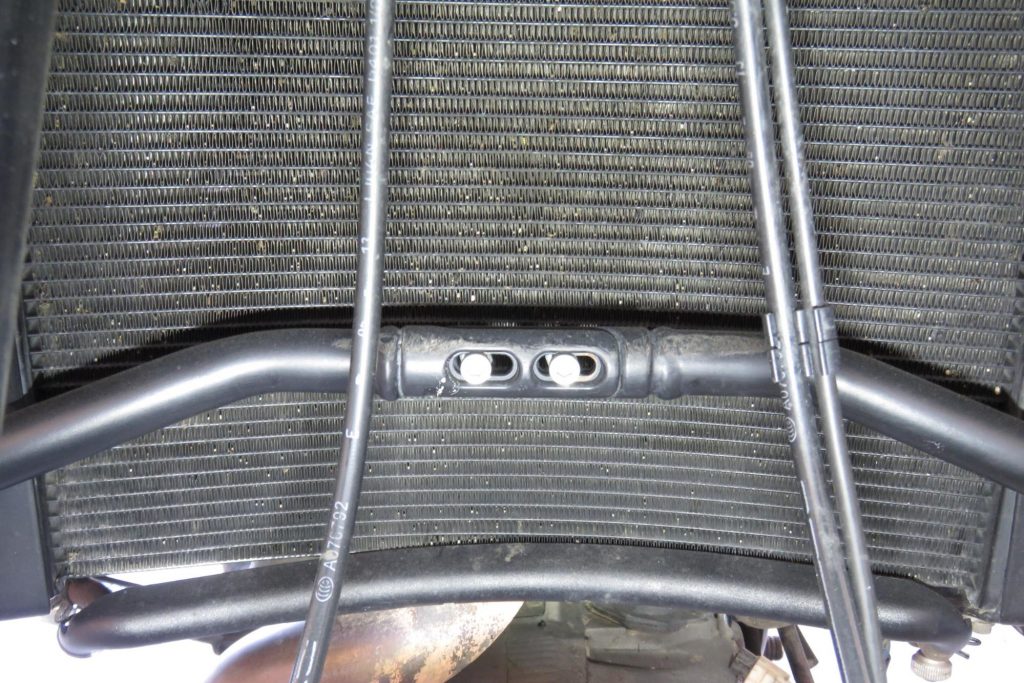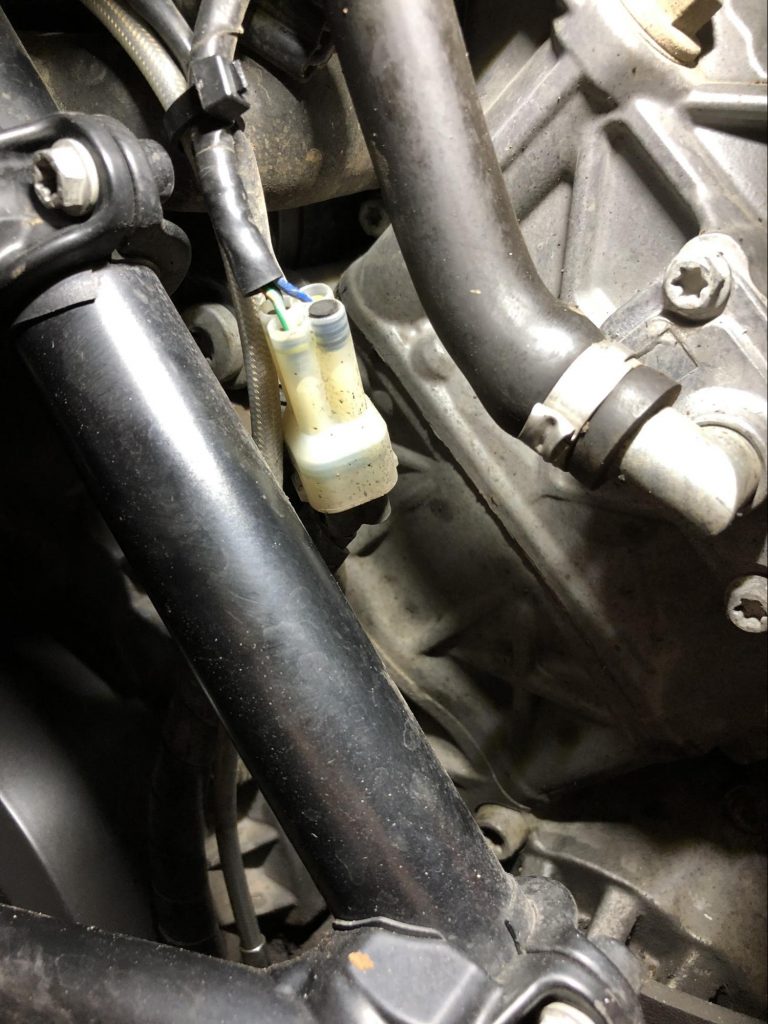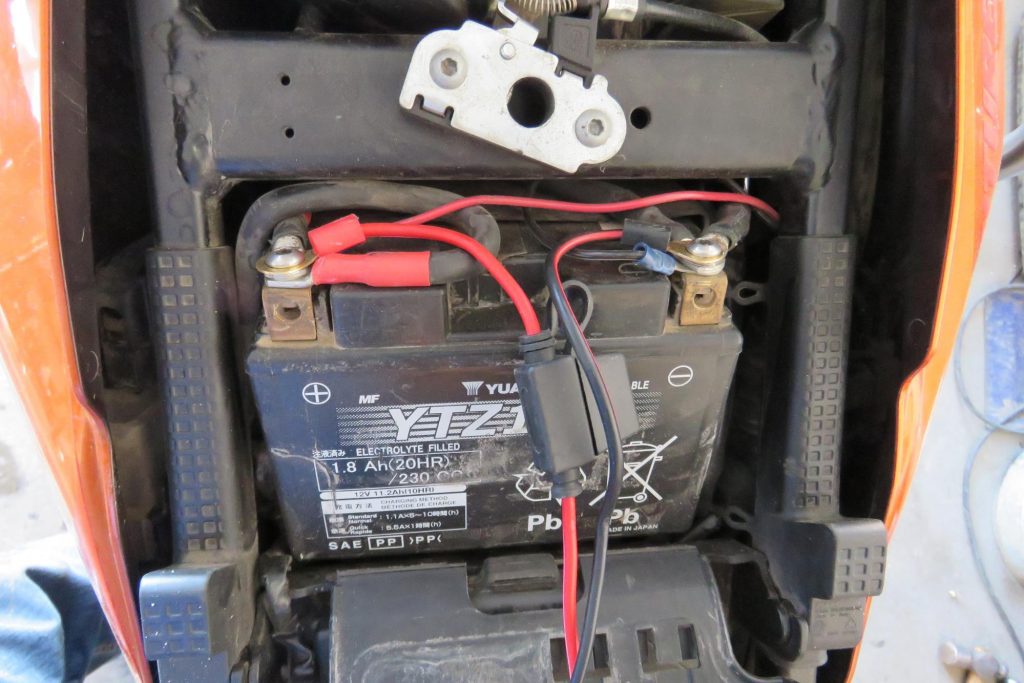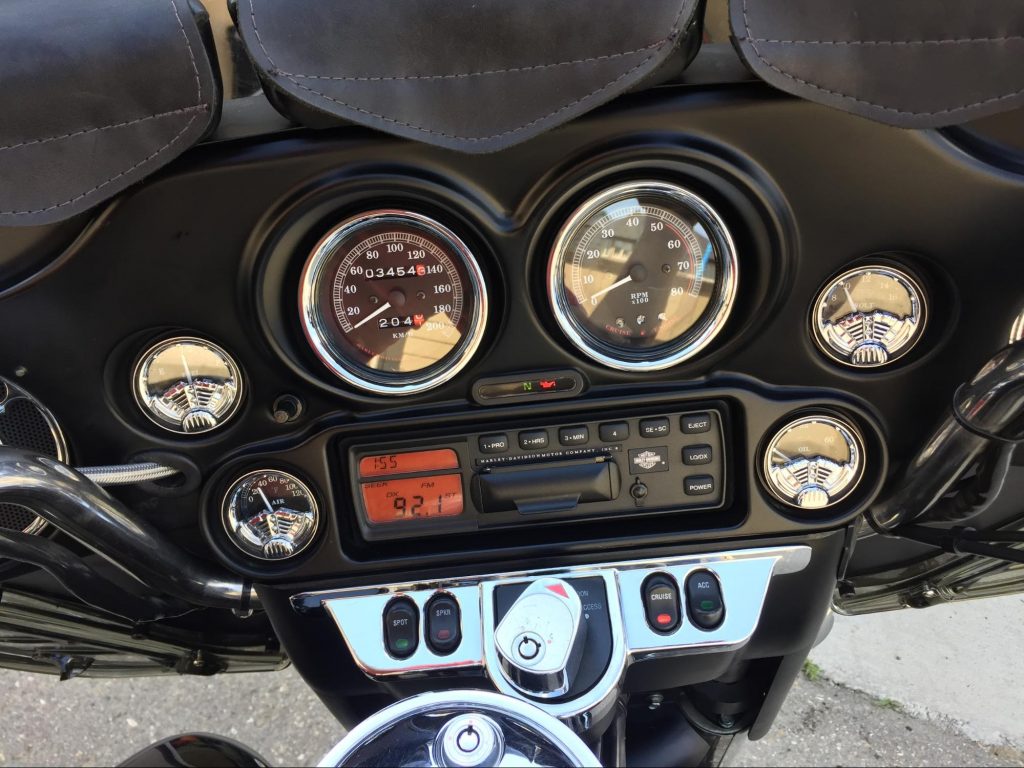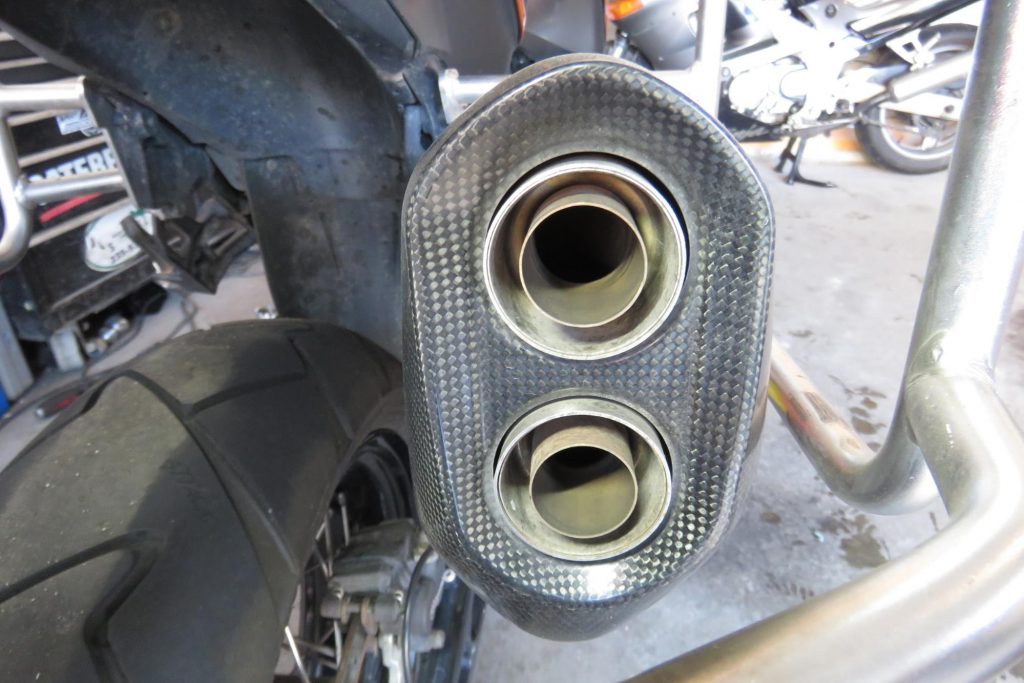Caveat Emptor or Buyer Beware
There’s a tremendous difference between a vehicle that has been properly maintained and one that hasn’t. I’ve owned several cars, trucks, and bikes sporting high miles that have been very reliable because someone took good care of them before me. Obviously, if you can get one with lower miles that have been maintained all the better, but it’s not a must-have.
Spotting problems caused by lack of maintenance can be easy or difficult and there’s no foolproof, magic bullet or piece of advice I can offer, but there are several tell-tale signs that should be avoided when buying used bikes.
Be Prepared
I always bring a small light with me to look into dark places where trouble often hides. Sometimes I bring a multimeter so I can test battery and charge voltage, but that’s kind of unnecessary.
Fluid Checks
This seems almost too basic but counts for a lot. Before you start the engine check the engine/transmission oil level, coolant level, and brake fluid reservoirs. If they’re dark and dingy in color or you see contamination of the oils with water (it will look milky) or it smells strongly like gasoline or like they’ve been burnt just walk away. It’s not worth it.
If the levels are low it’s not a good sign either. I always ask to see where the bike is stored and look for puddles or drips on the floor. If all the fluids are clean there’s still a chance the owner just changed them to make it look good for selling, but usually, it’s a sign of good maintenance practices.
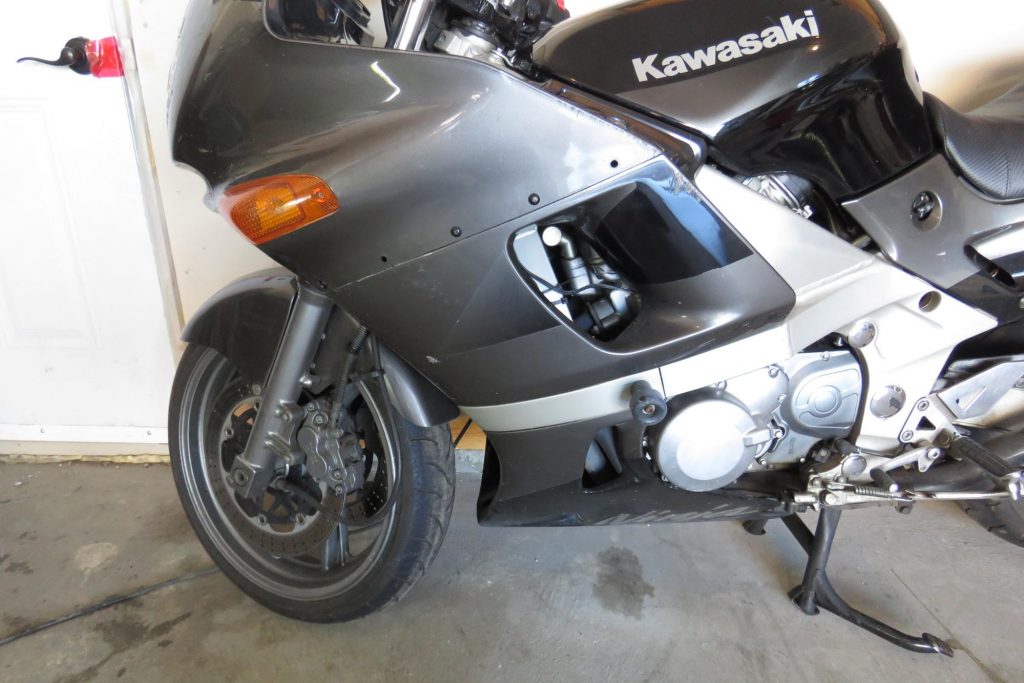
Follow Your Nose
Open the gas tank filler and have a quick sniff. If it smells dank like Varsol instead of like sweet gasoline, walk away.
Is there rust visible in the tank or on the filler cap? Fuel leaks? Is the rubber seal breaking up and falling into the tank?
Get Low Down
Get down and look underneath the engine for evidence of leaks starting and while you’re down there look for missing bolts or big scratches too. Anything that looks unusual could indicate the bike was treated roughly or possibly crashed.
Have a look at the top of the engine for leaks around the valve cover and further down the cylinders if they’re exposed.
If you can see the engine oil filter check whether it shows rust or damage too.
Fasteners
Note the missing fairing screws above. You may not think much of it but those aren’t cheap to replace.
Have a general look at body bolts and screw heads to see if any are missing, broken or stripped. All strong signs of neglect and abuse.
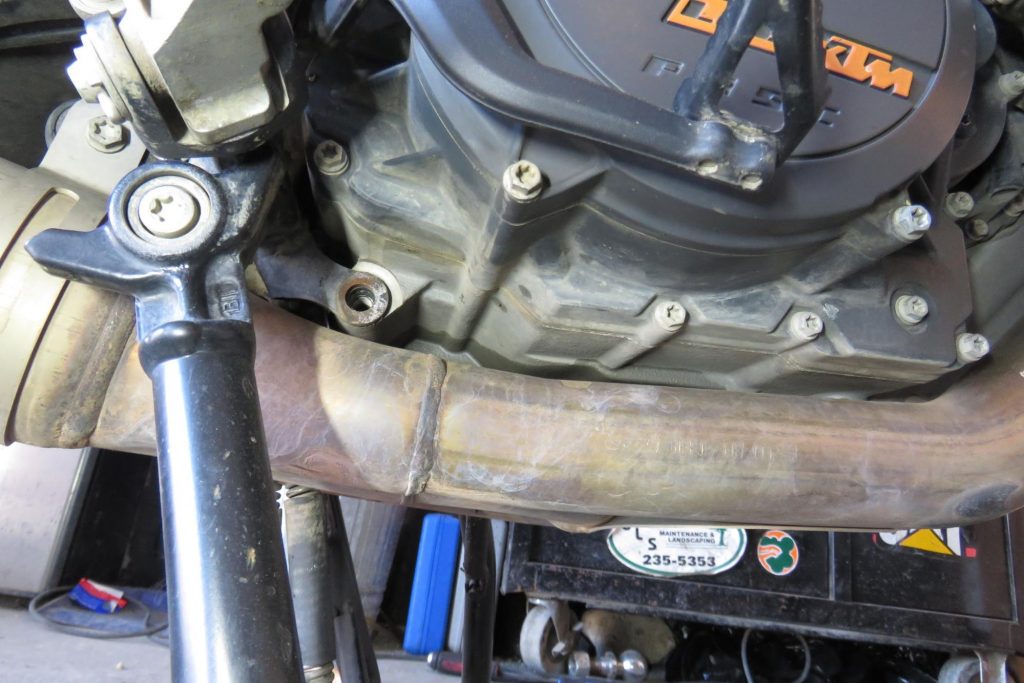
Suspension
The front forks need to be straight and the chrome shouldn’t have scratches or dents. You’ll want to look for oil seeping out around the seals at this point too. The rear shock may be harder to see but have a look at the spring for cracks and other signs of distress.
The top two photos show a leaking fork seal. This isn’t a bad leak yet and could be fixed using a seal cleaning tool. Any worse than this and you’re looking at a rebuild. $$$$

Sit on the seat and bounce the rear shock with your body weight. It should go down, come back up and stop. If it goes down again and acts springy then chances are good the rear shock needs replacing or rebuilding.
The front end can be pushed down by your weight too while sitting on the bike. You can’t really bounce test the front, but you can listen for clunking or other strange noises. There should be little or no sound while doing this.
Brakes
It can be tough to judge whether brakes are worn out sometimes without removing the calipers, but usually, you can look from just the right angle through the spokes and see whether there’s still some friction material left on the pads.
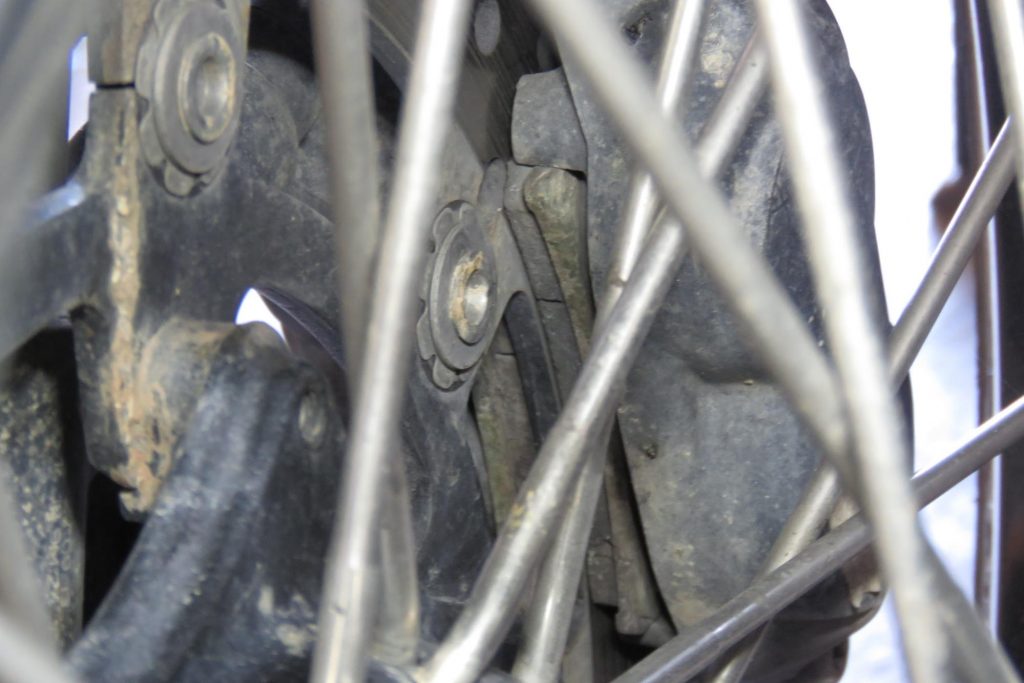
Have a close look at the rotors for cracks, discoloration and deep grooves worn into them. All of those are signs of repairs needed which should knock down the asking price. Rotors can cost several hundred dollars on some bikes to replace. You’ll want to price them out before you buy you know what you’re getting into.
Brake lines should be free from cuts and leaks.
Roll the bike forward and backward to test the brakes front and back. Listen for squealing or growling noises. Ideally, you shouldn’t hear anything, even when out on a test drive if you’re allowed to have one.
During a test drive, you’ll want to do some harder braking and more gentle applications to try and see whether there’s vibration or pulsating happening too. Those aren’t deal breakers but are indications the bike needs new brakes. $$$$
Reference this article for more brake inspection and maintenance tips: Checking Brakes and Lines at Home.
Radiator and Hoses
On a liquid cooled bike have look at the fins on the rad. Ones that look corroded or have lots of fins folded over aren’t going to last long before leaking and will be expensive to replace. This radiator in the picture above is in very good shape.
Obviously, you should look for cracks and leaks too.
Hoses should be flexible to the touch and free of cracks and leaks.
Spark Plugs
I often take a look at the spark plug area for dirt buildup and rust. If you find rust on the plugs you’d better ask when they were last replaced. The wires going to the plugs should be clean and in good condition too.
Air Filter
Some bikes have easy to access air filters while others don’t. If it’s easy, take a look and see whether it’s plugged full of dirt and dead bugs or clean as it will be with an owner who takes pride in the health of their ride.
Chain and Sprockets
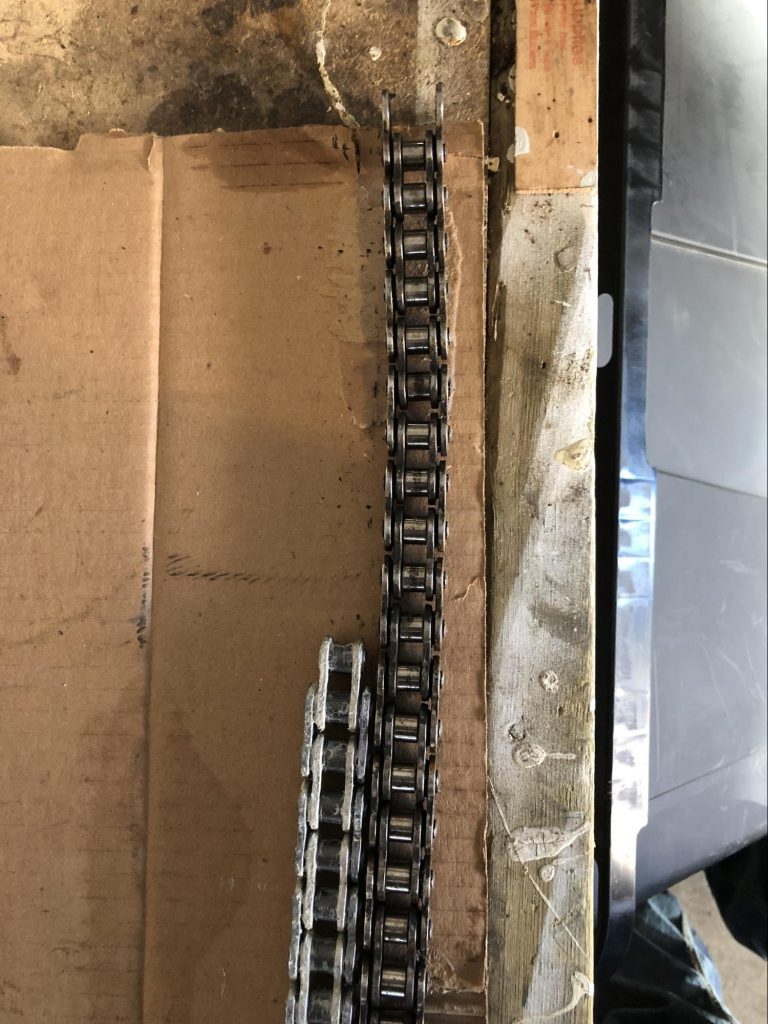
Chains and sprockets really say a lot about maintenance. The chain should be clean with a thin coat of lubrication on it and adjusted properly. It shouldn’t droop down low or be really tight either. You shouldn’t be able to pull back the chain off the rear sprocket much at all. There shouldn’t be links stuck out of alignment or any that look different from the others.
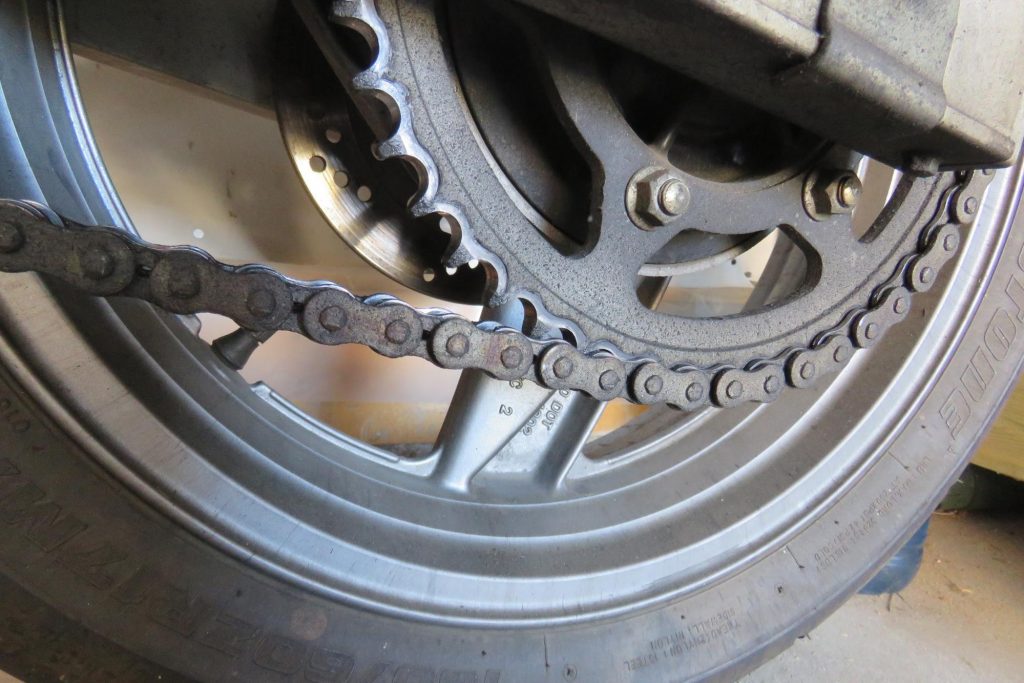
The sprocket teeth shouldn’t be worn irregularly or have teeth missing. Often the front sprocket is covered and hard to inspect, but look to see whether there’s excessive buildup of lube and dirt around it if you can.
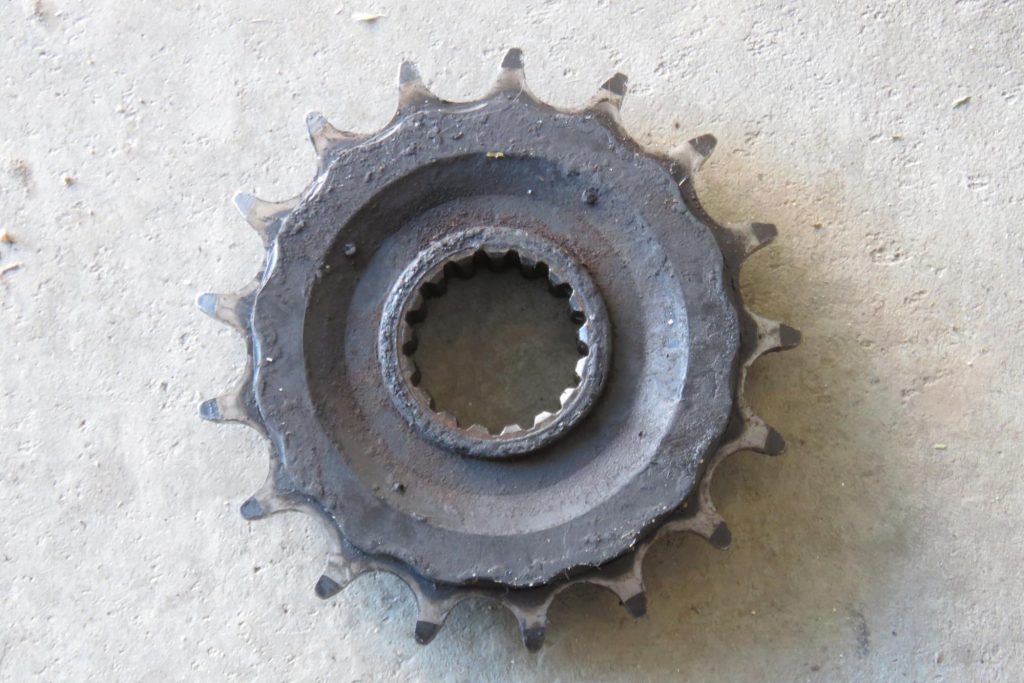
If you drive the bike, listen for slapping noises coming from the chain. A new chain and sprocket are quite expensive if you use a quality X ring one so again find out the cost before you buy.
Shaft Drive and Wheel Bearings
If the bike has a shaft drive check it by raising the rear wheel off the ground, then while grasping the wheel at 12 and 6 o’clock try wiggling the wheel back and forth across the axis of the rear axle. If you see movement anywhere something has failed or is failing. It should be rock solid. This check can also expose a worn out wheel bearing or worn out bushings in the rear swingarm.
You can do the same test on the front wheel if you can get it in the air.
Check out the video from YouTuber Jeff Slavens to see what test technique I’m talking about.
Electrical
Before you start the bike check all the lights function and if there are any warning lights on the dash lit up.
If you can remove the seat take a look at the battery electrical connections looking for corrosion.
Test options like heated grips, seats and other farkles like GPS are in working order on the bike.
Ask how old the battery is. Typically they only last 3 to 5 years, so if it’s 4 you should expect to replace it fairly soon.
Paperwork and Invoices
When I bought my Harley Ultra Classic I was amazed to receive a file folder over an inch thick containing an invoice for every service and aftermarket part ever installed on the bike. It was awesome information to have and you should ask to see it if possible.
Most importantly this will give you an idea when the last valve set was done and when it’s next due.
Tires and Rims
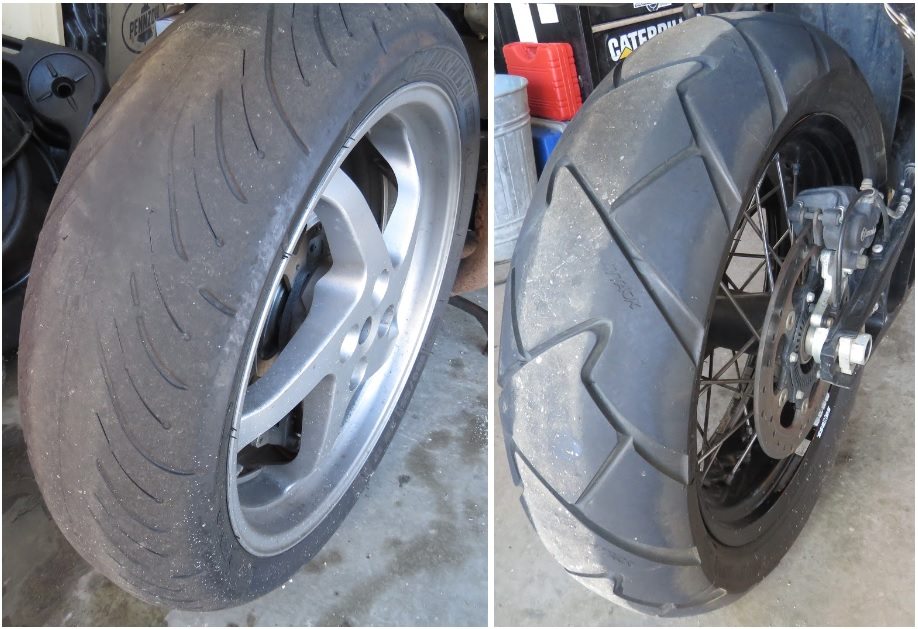
If you find sidewall cracks, uneven wear or small balls of rubber on the edges of the tires I would be concerned and budget for new ones. The front tire should most often have deep tread and be in good shape while the rear quite often will show the bulk of normal wear. Look for plugs and nails in them too.
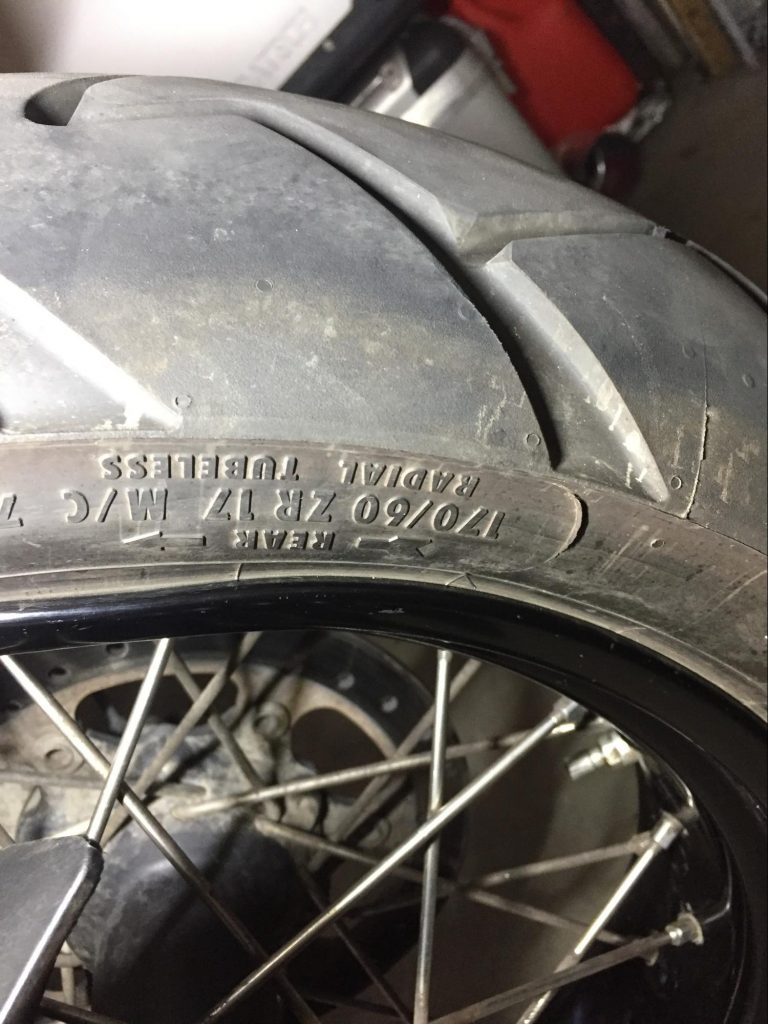
The rims should have spokes that are tight and not bent. If it’s a mag type rim have a look for cracks and rub marks. On any type of rim look for dents and missing wheel weights too.
If someone really is up to speed on their maintenance schedule then tires should always show it by being in good condition. When I buy a used bike I’ll often replace the tires automatically because they’re so critical to my well being.
Cold Engine Starts
When I go to see a potential buy, I insist on being the first person to start the engine that day. Many times the seller will immediately confess the battery is dead or to some other sin against maintenance and I’ll start to lose interest and save myself from a wasted trip.
A cold start is when an engine has to work the hardest to start and you can learn a lot about it. The same way you can learn the most about a person when they’re in a stressful situation.
What You Want
- The engine turns over quickly and without hesitation when you push the start button.
- The engine starts after 1 to 2 seconds
- The idle is higher at first until the bike warms up and then comes down and runs evenly (Fuel Injected bikes)
- Carbureted bikes should start just as quickly with the choke on when cold and idle nicely after turning the choke off once warmed up
- If it’s a liquid cooled engine the electric fan on the radiator should come on after the bike warms up fully
- Once the engine is warm give the throttle some smooth turns and then some quicker ones to listen for hesitation and bogging. Those could indicate a lack of fuel system maintenance.
What You Don’t Want
- Hard starting. This is a big sign of valves that need adjustment, dirty fuel system, bad spark plugs or compression issues in the engine
- Backfiring, blue smoke, in particular, coming out the tailpipe or excessive smoke of any kind
- An oily buildup in the tailpipe(s) unless it’s a 2 stroke engine of course
- Smoke coming out of any part of the exhaust other than the end of the tailpipe
- Any burning or unusual smells
- Loud ticking, knocking or clunking sounds from the engine
- Try working the clutch to see how far out you have to pull in and let out the lever before the friction point starts to move the bike forward. Lots of movement could indicate worn out clutch material and the need for replacement.
- Sticky or stiff throttle twists
General Appearance
A proud owner is one who takes care of their bike, so if it’s shiny and clean when I come to see it that’s a sure sign to me they’ve got nothing to hide and took good care of it.
Don’t be afraid to ask lots of questions about what work they’ve done or had done to it. Get the owner talking and you’ll be amazed what you’ll find out.


